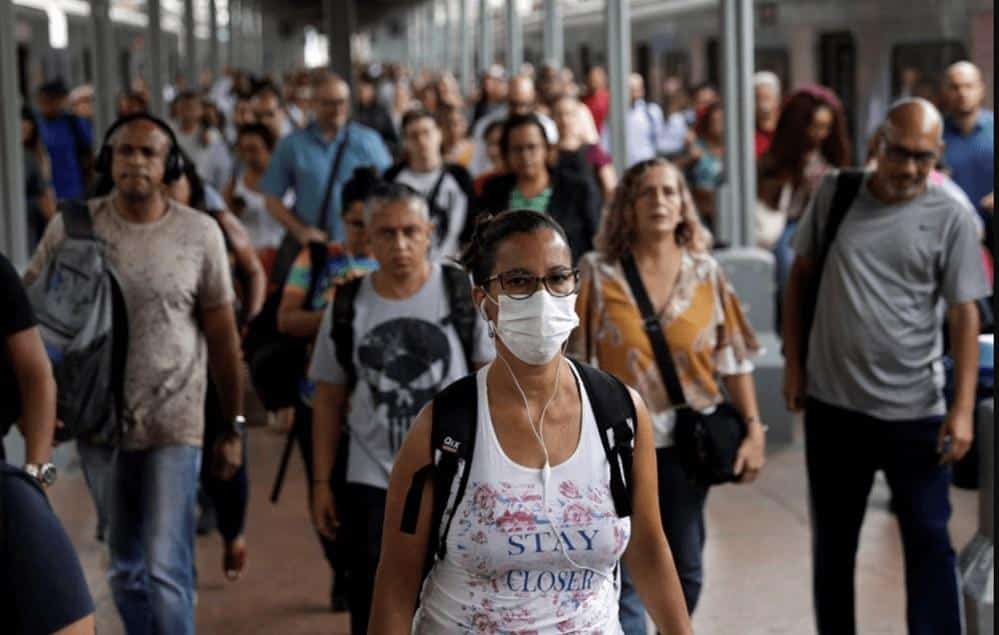RIO DE JANEIRO, BRAZIL – One in every ten residents of the city of São Paulo has already been infected with the novel coronavirus. A new test performed by the City on a sample of the population, the so-called serological survey, found that 1.2 million people in the city have had contact with the virus, which represents seven times the official number of cases confirmed through Thursday, July 9th, 178,118.

The survey, designed to map the course of the disease in the city, also showed that the infection rate is three times higher in residents of social class E than those in class A. This is shown through city maps, which show the highest incidence of cases and deaths in the city’s peripheral areas. Lower income and schooling, and a higher number of residents in each home, were pointed out as risk factors for infection.
This is the second such investigation conducted by the São Paulo City Hall in order to assess the real rate of Covid-19 infection in the city. In the first study, presented on June 23rd, it was estimated that 9.5 percent of the population, or 1.1 million people, had already been infected. The sample margin of error is 2 percent plus or minus.
Now this rate, called seroprevalence, has risen to 9.8 percent, which according to Edson Aparecido, the city’s Secretary of Health, shows stability. However, compared to other countries that have recorded high numbers of coronavirus cases, the rate is quite high. In France and Spain, for instance, seroprevalence reached five percent.
To conduct the study, the mayoralty took as a base over 5.3 million households in 96 districts in all regions of the city, and conducted 2,864 collections. The sample survey found that the southern zone has the highest seroprevalence rate, standing at 11 percent. The study showed that cases are concentrated in 14 districts of the city, most of them in peripheral areas: Brasilândia, Sapopemba -both leading in death records- Cachoeirinha, Jaçanã, Liberdade, Santa Cecília, Cidade Ademar, Jardim São Luiz, Campo Limpo, Capão Redondo, Parque São Lucas, Itaim Paulista, Itaquera, and Lajeado.
The City’s strategy in these regions will now focus on guiding health care professionals to monitor patients. “In these 14 districts with the highest incidence we will do even more field work,” said Mayor Bruno Covas. To this end, monitoring of relatives closest to the infected person will be carried out. “We will go to people’s homes, test an average of five people close to the infected person, and issue a certificate for them to remain at home until the test result comes out,” explained Health Secretary Edson Aparecido.
Currently, the municipality is monitoring 288,903 people with suspected Covid-19 respiratory syndrome. The municipality said it has run 580,000 tests so far and 5,000 new PCR-type tests (which detect the presence of the virus when it is still in the body) are performed daily in the municipal health network. With the new testing and monitoring strategy, the municipality plans to reach 400,000 tests per month.
The new strategy, announced almost five months after the first case of coronavirus recorded in the city, is in line with the gradual steps the capital has taken towards reopening its economy. On Thursday, Mayor Covas announced that 70 percent of city park spaces will be back in operation next Monday, with reduced hours and public. The mayor is also expected to announce the protocol for the reopening of gyms and fitness centers soon. These reopenings occur following that of bars and restaurants, which were allowed to open to the public as of this week. Commerce in general, offices, and real estate were the first to reopen.
Seven other such surveys are still planned to be conducted in São Paulo. They are similar to the one conducted by the Federal University of Pelotas (UFPEL) and financed by the Ministry of Health. In three stages, the UFPEL tested the real number of people infected with the coronavirus nationwide and pointed out that in two weeks, the number of people who had or have had contact with the disease increased by 53 percent, revealing the high speed with which Covid-19 spreads throughout the country. A further conclusion was that the real number of infections is six times higher than the official statistics. The survey was conducted in three stages, with data collected from 133 municipalities in all states.
Source: El País

